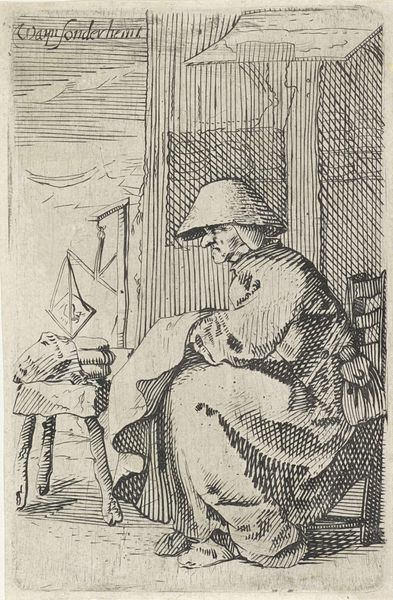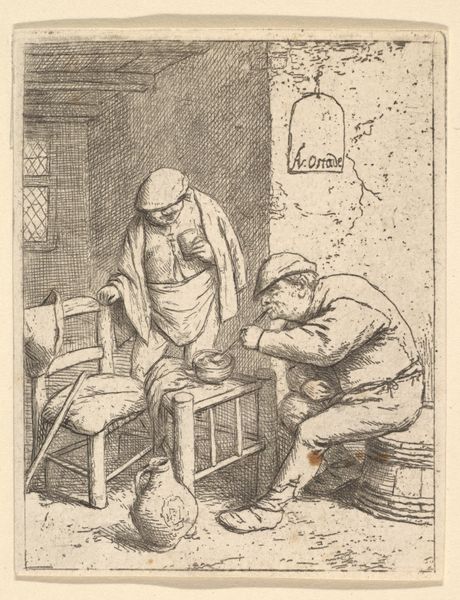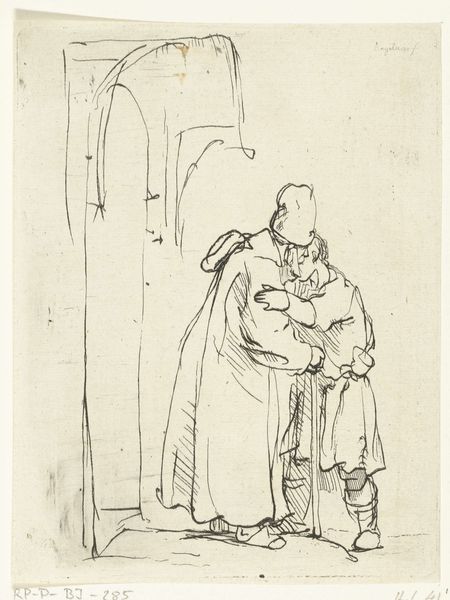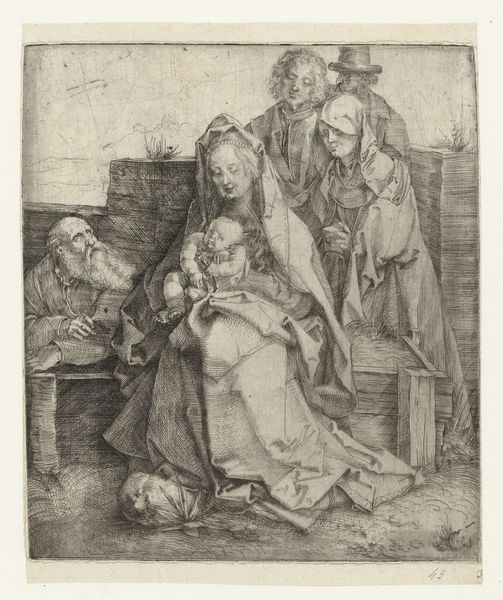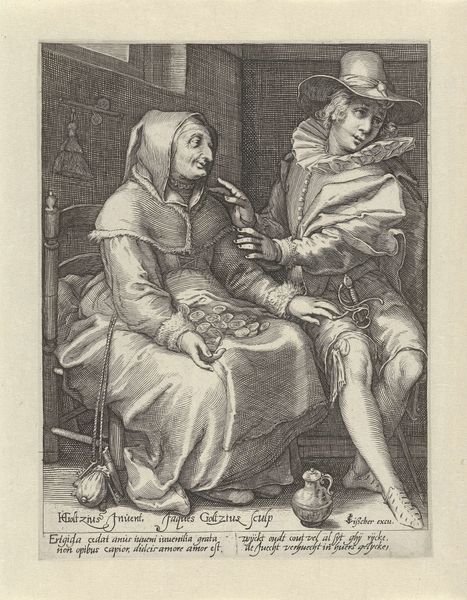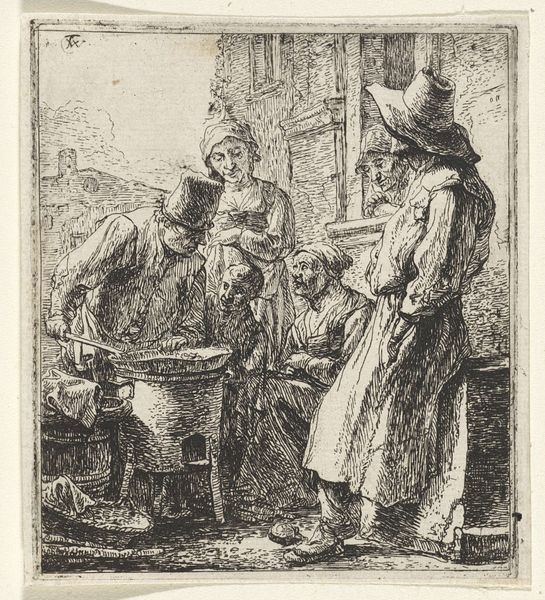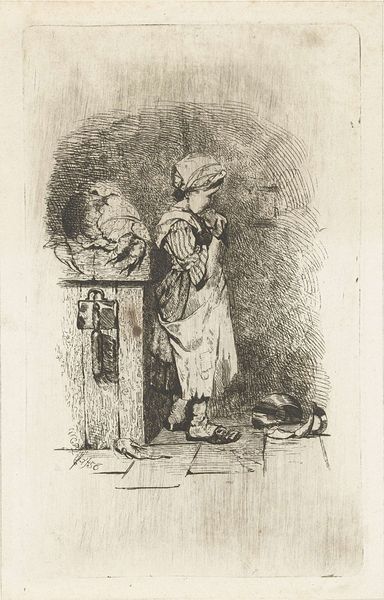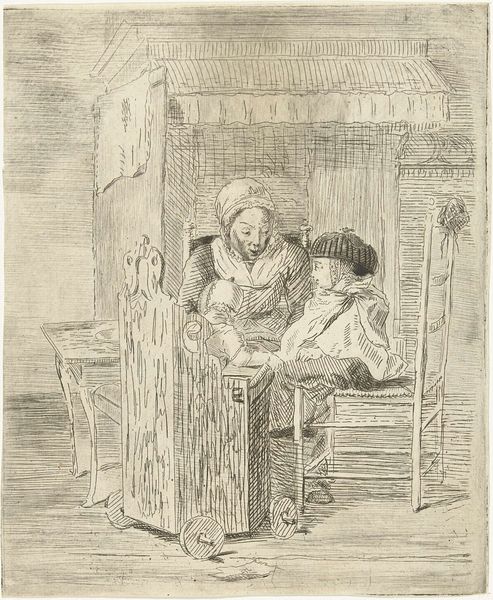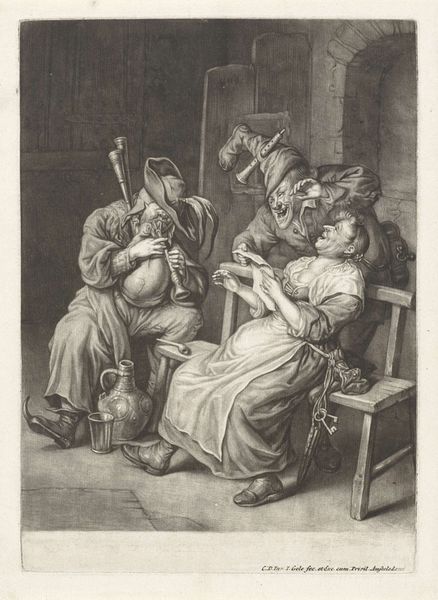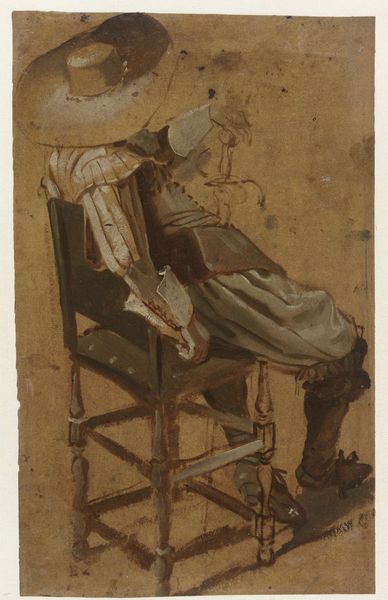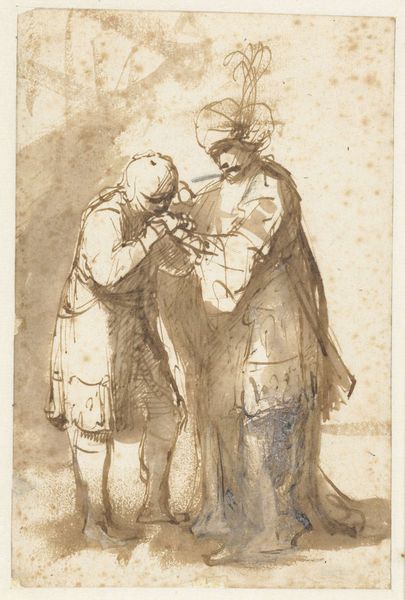
drawing, pencil, pen, charcoal
#
portrait
#
pencil drawn
#
drawing
#
baroque
#
dutch-golden-age
#
pencil sketch
#
charcoal drawing
#
pencil drawing
#
pencil
#
pen
#
portrait drawing
#
genre-painting
#
charcoal
Dimensions: height 348 mm, width 257 mm
Copyright: Rijks Museum: Open Domain
Curator: I am immediately drawn to the somber, almost hushed mood. The monochromatic tones, likely charcoal or pencil, create a quiet sense of observation. Editor: That's interesting. Let’s consider Jacob de Wit's “Two Men with Hats Inspecting a Straw Chair,” dating roughly from 1705 to 1754. We're seeing an intriguing example of genre painting emerging within the Dutch Golden Age. It makes one wonder: what stories are not being explicitly told? Curator: Well, what strikes me is the contrast. You've got the central figures intensely focused on what is, essentially, a mundane object – a simple chair. While the two women in the upper background appear disinterested, even aloof. It almost hints at different social stratifications coexisting. Editor: Precisely. The chair becomes symbolic. What does it mean for these men to be so engaged with its materiality and construction? The very act of examining a commonplace object in such detail speaks volumes about class distinctions during the Dutch Golden Age. It also speaks to how labor was perceived. Curator: Indeed. It raises questions about visibility and invisibility. Whose labor is valued? Whose stories are deemed worthy of representation? And does their attire reveal something more about status, particularly regarding those positioned lower on the societal hierarchy, often unacknowledged? Editor: We should also consider the implied narrative—what preceded this moment, and what follows? Does this encounter challenge existing social structures, or does it reinforce them? It is interesting the contrast between the close and loose sketch work done here. Curator: Right, but it is worth noting how much of this relies on speculation, since there isn't an obvious challenge. But by highlighting figures often pushed to the margins, de Wit is engaging in the artistic activism of subtle re-centering of attention and asking us to think about whose perspectives are privileged and who is traditionally rendered unseen. Editor: Ultimately, this work functions as a social mirror. Its brilliance is its ability to incite inquiries regarding equity, status, and perception in Dutch society—an introspective task we can carry on as present-day observers. Curator: And to continue the discourse and acknowledge art's dynamic link to both historical eras and current concerns.
Comments
No comments
Be the first to comment and join the conversation on the ultimate creative platform.
